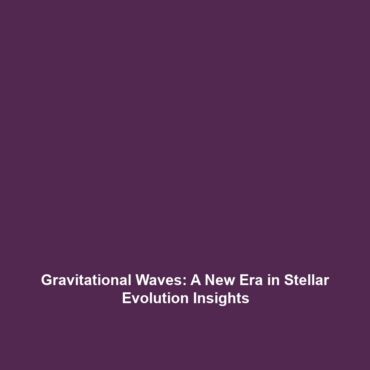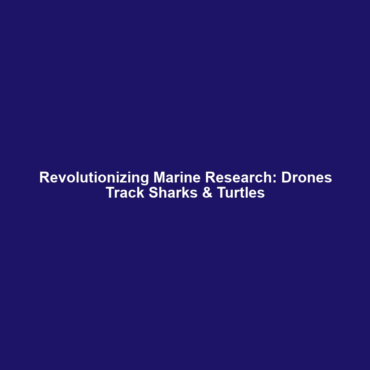<>
How Gravitational Wave Observations Could Redefine Our Understanding of Stellar Evolution
Gravitational waves, first predicted by Albert Einstein in 1916, are ripples in spacetime caused by some of the universe’s most violent and energetic processes. Recent observations of these cosmic phenomena have opened up new avenues for understanding stellar evolution, vastly enhancing our knowledge of star formation, stellar death, and the subsequent mergers of compact objects. The implications are profound, potentially changing our foundational understanding of astrophysics and the lifecycle of stars.
Key Concepts in Gravitational Waves and Stellar Evolution
To appreciate how gravitational wave observations could redefine our understanding of stellar evolution, it is crucial to grasp several key concepts:
- Gravitational Waves: These are produced by accelerating masses, particularly during events such as neutron star mergers, black hole collisions, or supernova explosions.
- Stellar Evolution: This refers to the life cycle of a star from its formation to its eventual death, including the processes that lead to different types of stellar remnants.
- Compact Objects: The remnants of massive stars that have undergone supernova explosions, including neutron stars and black holes, are significant sources of gravitational waves.
Applications and Real-World Uses
Understanding how gravitational wave observations could redefine our understanding of stellar evolution has several practical implications in the field of astrophysics:
- Establishing Distance Scales: Gravitational waves allow astronomers to measure cosmic distances more accurately, contributing to the understanding of the universe’s expansion.
- Population Studies of Neutron Stars: Data from gravitational waves can inform models about the population and distribution of neutron stars in the galaxy.
- Testing General Relativity: Observations provide empirical data to test the predictions of general relativity under extreme conditions.
The applications of gravitational waves in stellar evolution exemplify how these insights can lead to a deeper understanding of cosmic phenomena.
Current Challenges in Gravitational Wave Research
Despite the exciting prospects of gravitational wave observations, several challenges hinder this research:
- Detection Sensitivity: Current detectors have limitations in sensitivity and range, restricting the types of events that can be observed.
- Data Analysis Complexity: The vast amounts of data generated by gravitational wave detection require advanced analysis techniques, making interpretation challenging.
- Astrophysical Models: Developing accurate models that correlate gravitational wave data with stellar evolution remains an ongoing effort, as our understanding of the processes involved is still evolving.
Future Research and Innovations
The future of gravitational wave research is bright, with various innovations on the horizon:
- Next-Generation Detectors: Enhanced detectors, such as the Einstein Telescope or LIGO II, promise improved sensitivity and the ability to detect fainter events.
- Multi-Messenger Astronomy: Combining gravitational wave data with electromagnetic signals will provide a fuller picture of cosmic events and their origins.
- Theoretical Advances: New theoretical models may emerge that better describe the dynamics of stellar interactions leading to gravitational wave emissions.
Conclusion
Gravitational wave observations stand to redefine our understanding of stellar evolution fundamentally, offering fresh insights into the life cycles of stars and the underlying physics of the universe. As researchers continue to enhance observational capabilities and theoretical frameworks, we are on the brink of unprecedented discoveries in astrophysics. For further reading on related topics, visit our page on stellar evolution or check out our section on gravitational waves.

